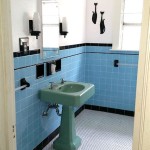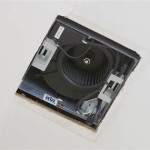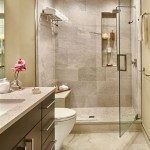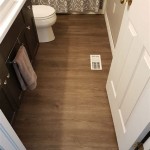Vanity Units For Small Bathrooms: Maximizing Space and Style
Small bathrooms present unique design challenges. One of the most crucial aspects of optimizing space in a compact bathroom is selecting the appropriate vanity unit. Vanity units not only house the sink and plumbing but also provide essential storage, contributing significantly to the functionality and aesthetics of the room. Careful consideration of size, style, and storage capacity is paramount when choosing a vanity for a small bathroom.
The primary goal when selecting a vanity for a small bathroom is to maximize space without compromising on functionality or visual appeal. This often involves exploring alternatives to traditional, bulky vanities and opting for more streamlined and space-saving designs. The market offers a wide array of vanity units specifically designed for compact bathrooms, each with its own set of advantages and disadvantages.
Understanding Space Constraints and Measurement
Before embarking on the selection process, accurately measuring the available space is critical. This involves determining the width, depth, and height limitations within the bathroom. Consider not only the floor space but also the proximity to doors, windows, and other fixtures. The vanity should fit comfortably within the designated area without obstructing movement or access to other bathroom elements. A precise measurement will prevent purchasing a vanity that is either too large or unnecessarily small.
Beyond the basic footprint, it's important to account for the placement of plumbing connections. The location of water supply lines and drainpipes will influence the type of vanity that can be installed and may necessitate adjustments to existing plumbing. Consulting with a plumber before making a purchase can save time and money by identifying potential installation challenges.
Another crucial factor is the swing of the bathroom door. Ensure that the vanity does not impede the door's opening and closing. If space is particularly tight, consider a door that swings outward or a sliding pocket door to maximize usable area. Likewise, assess the clearance around the toilet and shower or bath to ensure comfortable movement within the bathroom.
Exploring Different Types of Small Bathroom Vanities
Several types of vanity units are well-suited for small bathrooms, each offering different space-saving advantages. These include wall-mounted vanities, corner vanities, slim depth vanities, and pedestal sinks with integrated storage solutions.
Wall-mounted vanities, also known as floating vanities, are excellent space-saving options. By suspending the vanity off the floor, they create the illusion of more space and allow for easy cleaning underneath. The open space beneath can also be utilized for storing small items like baskets or towels. The absence of legs or a solid base contributes to a more modern and airy feel, making the bathroom seem less cramped.
Corner vanities are designed to fit snugly into the corner of a bathroom, utilizing space that might otherwise be wasted. These vanities typically have a triangular or curved shape, maximizing storage while minimizing their footprint. Corner vanities are particularly useful in bathrooms with irregular layouts or limited wall space.
Slim depth vanities are characterized by their shallow profile, making them ideal for narrow bathrooms or powder rooms. These vanities project less into the room than standard vanities, preserving valuable floor space. While they may offer less storage capacity than deeper vanities, they can still provide sufficient space for essential toiletries and supplies.
Pedestal sinks, traditionally known for their minimal storage, are now available with integrated storage solutions. Some pedestal sinks incorporate a small cabinet or shelf beneath the sink basin, providing a discreet place to store frequently used items. This combination of classic design and modern functionality makes them a viable option for small bathrooms where space is at a premium.
Optimizing Storage within Vanity Units
The internal storage configuration of a vanity is just as important as its external dimensions. Maximize storage capacity by choosing vanities with well-organized compartments, drawers, and shelves. Consider features such as pull-out drawers, adjustable shelves, and built-in organizers to keep toiletries and other essentials neatly stored and easily accessible.
Drawers are generally more efficient for storing smaller items, as they allow for easy visibility and access. Shelves are better suited for larger items or items that do not need to be accessed as frequently. A combination of drawers and shelves provides the most versatile storage solution.
Utilize vertical space within the vanity by adding tiered organizers or stackable containers. This can help to maximize the use of available space and prevent clutter. Consider using drawer dividers or organizers to keep smaller items separated and prevent them from becoming jumbled together.
The vanity's countertop can also play a role in storage. Choose a countertop with ample surface area for placing frequently used items like soap dispensers, toothbrushes, and hand towels. Alternatively, consider a countertop with an integrated backsplash, which can help to prevent water damage and provide a convenient place to store small accessories.
Beyond the internal storage of the vanity itself, explore options for supplemental storage in the bathroom. Consider adding wall-mounted shelves, medicine cabinets, or over-the-toilet storage units to further maximize space and keep the bathroom organized.
Selecting Materials and Finishes
The materials and finishes of a vanity unit can significantly impact the overall look and feel of a small bathroom. Light-colored materials, such as white, cream, or light gray, can help to create a brighter and more spacious atmosphere. Reflective surfaces, such as gloss finishes or mirrored accents, can also help to amplify light and create the illusion of more space.
Durable and water-resistant materials are essential for bathroom vanities. Common materials include solid wood, plywood, MDF (medium-density fiberboard), and various types of composite materials. Solid wood is a classic choice for its durability and natural beauty, but it can be more expensive than other options. Plywood and MDF are more affordable alternatives that can still provide good durability and water resistance when properly sealed.
Consider the maintenance requirements of different materials. Some materials, such as solid wood, may require regular sealing or polishing to maintain their appearance. Others, such as laminate or porcelain, are more resistant to stains and scratches and require less maintenance.
The hardware on the vanity, such as knobs, pulls, and hinges, can also contribute to the overall aesthetic. Choose hardware that complements the style of the vanity and the rest of the bathroom. Consider using simple, streamlined hardware to maintain a minimalist look in a small bathroom.
Considering Plumbing and Installation
Before installing a new vanity unit, it is essential to carefully consider the existing plumbing configuration. The location of water supply lines and drainpipes will influence the type of vanity that can be installed and may necessitate adjustments to existing plumbing. Consulting with a plumber before making a purchase can save time and money by identifying potential installation challenges.
If the existing plumbing is not in the ideal location, it may be necessary to relocate it. This can be a complex and costly undertaking, but it may be necessary to accommodate the desired vanity unit. Consider the cost of plumbing modifications when budgeting for the bathroom renovation.
Ensure that the vanity unit is properly sealed to prevent water damage. Apply caulk around the edges of the countertop and the base of the vanity to create a watertight seal. This will help to protect the vanity from moisture and prevent mold growth.
If you are not comfortable installing the vanity yourself, hire a professional plumber or contractor to do the job. Improper installation can lead to leaks, water damage, and other problems. A professional installer will ensure that the vanity is properly installed and connected to the plumbing system.
Consider the accessibility of the plumbing connections for future maintenance. Ensure that there is sufficient access to shut-off valves and drainpipes in case of repairs or replacements. This will make it easier to perform maintenance in the future and prevent costly plumbing emergencies.
Lighting and Mirror Considerations
Lighting and mirrors play a crucial role in enhancing the functionality and visual appeal of a small bathroom. Adequate lighting is essential for tasks such as shaving, applying makeup, and grooming. A well-placed mirror can create the illusion of more space and reflect light, making the bathroom seem brighter and more open.
Consider incorporating vanity lighting above or on either side of the mirror. This will provide even lighting for tasks and prevent shadows. LED lighting is a popular choice for bathroom vanities due to its energy efficiency and long lifespan.
Choose a mirror that is appropriately sized for the vanity unit. A large mirror can help to make a small bathroom seem more spacious, but it should not overwhelm the vanity. Consider a frameless mirror for a minimalist look or a mirror with a decorative frame to add visual interest.
Consider incorporating a medicine cabinet with a mirrored door. Medicine cabinets provide additional storage space for toiletries and medications and can be a convenient way to keep the bathroom organized.
Natural light is always preferable, but if the bathroom lacks natural light, consider adding a skylight or a window to bring in more daylight. This will help to make the bathroom feel more airy and inviting.

10 Vanity Units Perfect For Small Bathrooms Victorian Plumbing

Small 370mm Oak Vanity Cabinet With Round White Ceramic Basin

Bathroom Vanity Collection Of Large And Small Units

Solid Oak Bathroom Cabinet Small Vanity Units

10 Vanity Units Perfect For Small Bathrooms Victorian Plumbing

27 Best Toilet Sink Combo For Small Bathrooms In 2024 Houszed And Unit Vanity Remodel

Solid Oak Bathroom Cabinet Compact Vanity Sink Small Units

Bathroom Vanity Grey Painted Cloakroom Small Slimline Unit

6 Practical And Stylish Ideas For A Small Bathroom Toilet Sink Unit Units

Small Bathroom Ideas Roper Rhodes
Related Posts







